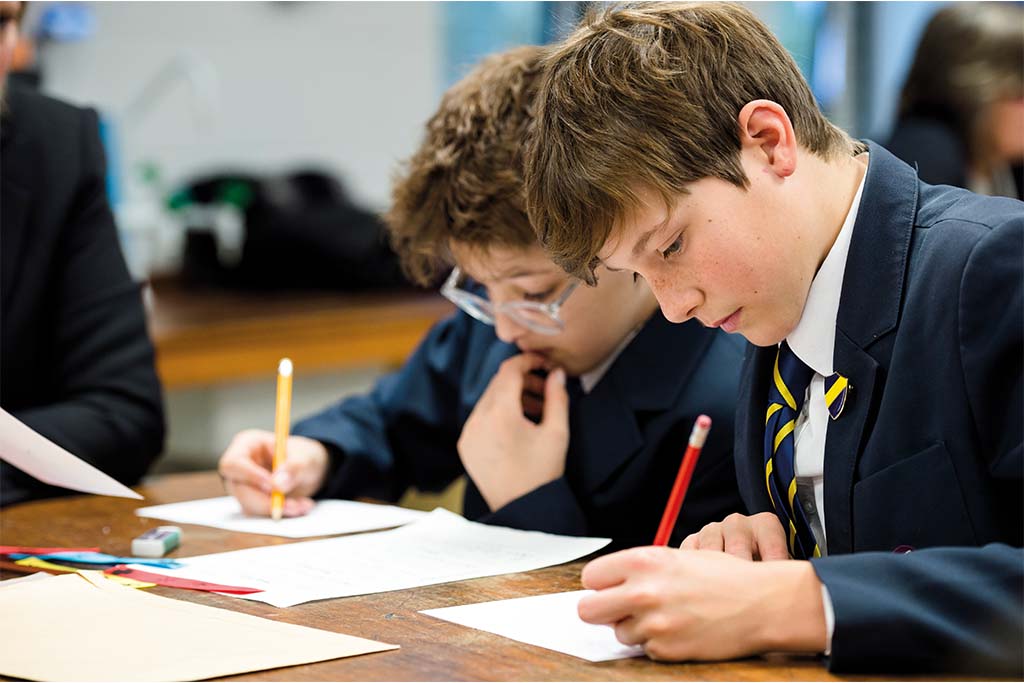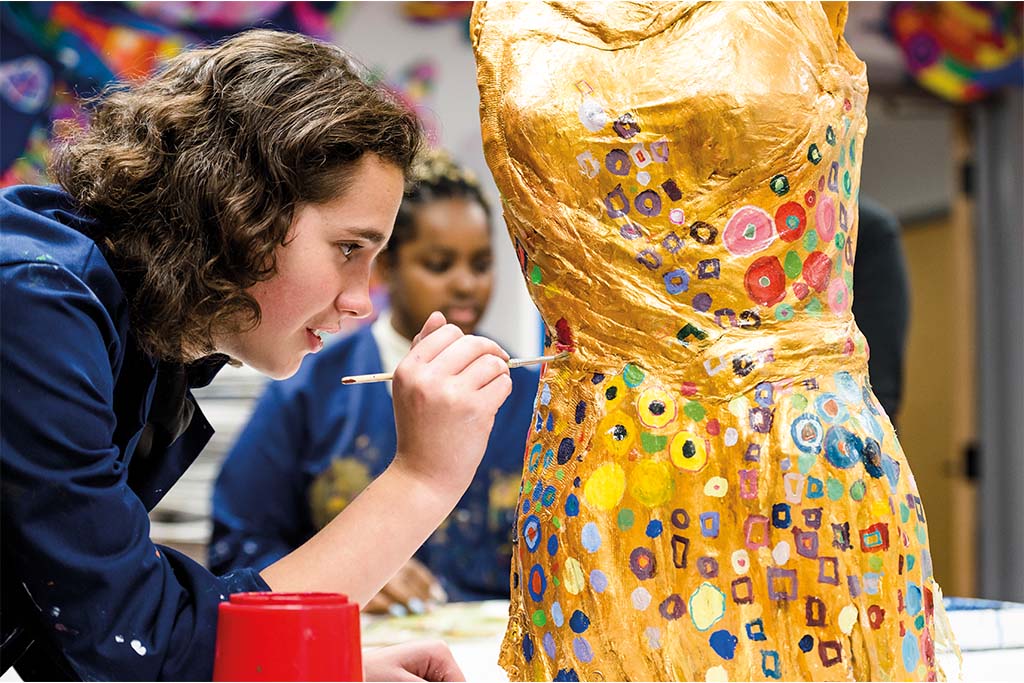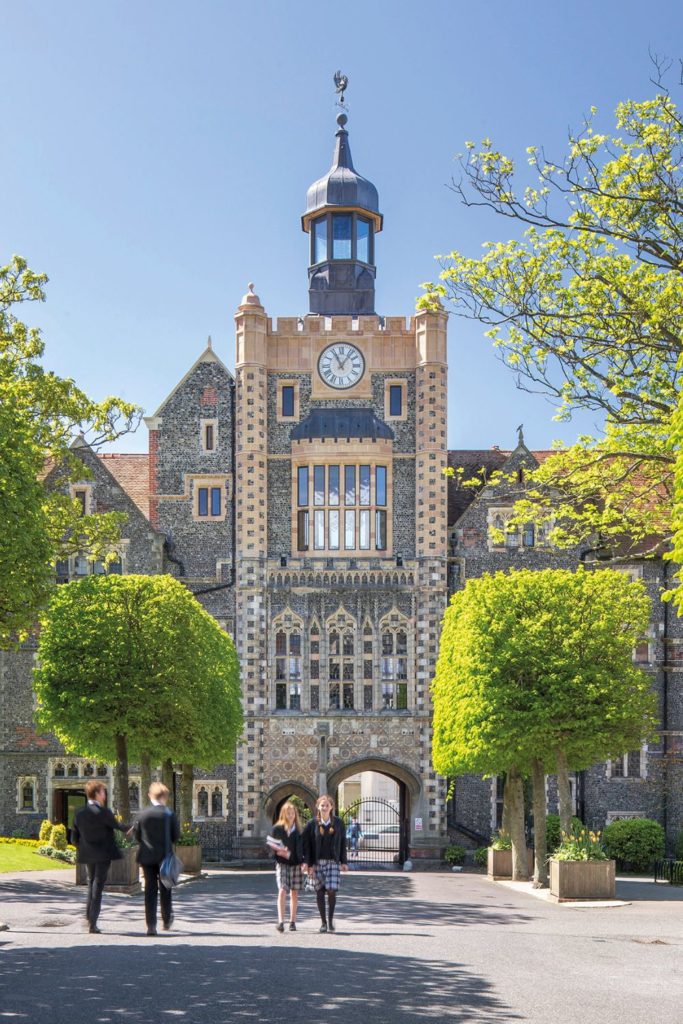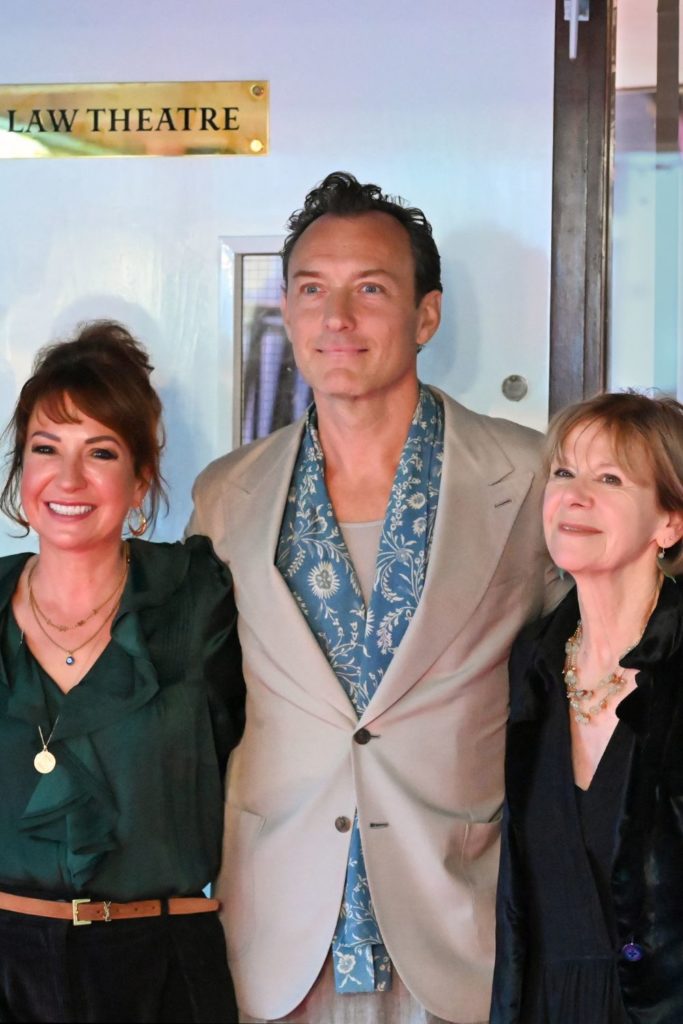Extra Time
By
4 years ago

In the first of a regular feature about conditions which can have an impact on children’s education, Annabel Heseltine talks dyslexia

My bright and engaged six-year-old son came home from school quite upset. Handing over his exercise book he told me he was rubbish at maths, that he had got just one out of 10 in his latest test. As a mother, sister and daughter of dyslexics I was on the alert but when I looked, I realised that he hadn’t got the other answers wrong at all. It’s just that whenever he wrote the – correct – number reversed, the teacher had marked it with a dot. When I explained to her my son’s take on her marking system she was aghast, but the damage had been done. Like many children with dyslexia, my son had been sent down the wrong path, the path of thinking he wasn’t any good.
Einstein famously wrote, ‘Everybody is a genius. But if you judge a fish by its ability to climb a tree, it will live its whole life believing that it is stupid.’ This, in essence, is the problem confronted day in, day out by dyslexic pupils because they don’t fit into a school system where children are taught from white boards and asked to write everything down; where short-term memory and reading are requisite as skills to access learning.
For children with dyslexia, this mode of learning is often impossible and as a result can be confidence sapping. It’s a problem which Jo Petty, who runs the Dyslexia Teaching Centre in Kensington, London, which provides educational psychology assessments and follow-up advice, has been working on for the past 40 years.

Her advice to parents suspecting their child has dyslexia is to get them tested as soon as possible. ‘If we get them early enough, they may not need to fail at all,’ Petty says; a diagnosis can help pupils get additional help, including extra time, or time out, in exams. ‘It is hard to get the message across to parents that their child is not stupid,’ she adds, ‘but they do need to be taught differently so that they can access information in the correct way.’ She worries far more about the undiagnosed 14-year-old. ‘If you leave it too late, it is very difficult for them to catch up.’
But while it’s easy to spot the little boy rushing off to the loo every five minutes or mucking around in the back of the class, it’s easier to overlook the little girl working twice as hard as everyone and apparently standing still, or the highly eloquent little boy who seems reluctant to write his essay, so let’s start with a few facts.
One in five people are dyslexic; of this 20 per cent of the population, about two per cent are severely so. Dyslexia is defined as a neurologically based, specific learning disorder which interferes with the acquisition and processing of language, and may occur with a cocktail of other ‘dys’s; dyspraxia, previously referred to as ‘clumsy child syndrome’, dyscalculia, directional dyslexia, dysgraphia and dysphasia as well as ADHD, short-term memory problems and processing difficulties, and may be comorbid with those on the autistic spectrum.
The debate is in the detail but it is widely acknowledged that more boys are dyslexic than girls, statistics suggest about 1.5:1, and that dyslexia in girls is not so easily picked up. Boys, never very happy in a traditional classroom setting, tend to be more avoidant than girls who are natural people-pleasers, which can be very damaging if not caught and corrected, says Dr Sally Shaywitz, co-founder of the Center for Dyslexia and Creativity at Yale University who invented the Shaywitz Dyslexia Screen. It is a sad fact that prisons have a significantly higher ratio of dyslexics. But there is good news, too.
Schools have got much better at looking after their pupils who are neuro-diverse; the term was coined in the late 1990s by Australian sociologist Judy Singer and covers all the learning differences.
Parents seeking the right school should be circumspect, asking the right questions, seeking to know how far the school goes to be inclusive. Are pupils being removed from class for additional lessons or perhaps given print-outs as memory aids? Are teachers well-informed about dyslexia and other learning difficulties? I once interviewed the head of learning support at a well-known senior school, when she excused herself. ‘I am so sorry,’ she said, ‘but it’s the English GCSE exam this afternoon and I have 50 scribes to organise for our dyslexic children.’

Look at how involved is the head of Learning Support (LS) in the entry assessment process. In some schools they sit beside the head during the interview; in others, even when there is an issue, the head of LS is not consulted.
Contrary to popular myth, the range of intelligence in neuro-diverse dyslexics mirrors those who are neuro-typical but their educational psychology profile will be spikey – and while there will be areas where they will struggle, there are areas where they can excel, sometimes exceptionally well. Their talents which may not shine in the classroom often include creativity, original and lateral thinking, all very useful skills for the workplace.
There’s a newspaper cutting stuck on to my fridge with the headline ‘GCHQ recruits dyslexics’. It is no accident that many of the brightest geniuses are also believed to be dyslexic; Thomas Edison, Einstein, Leonardo da Vinci. BBC research found that 40 per cent of self-made millionaires are dyslexic.
Learning to circumnavigate conventional problems seems to go hand-in-hand with dyslexics thinking outside of the box, all of which will stand them in good stead later on, just as long as they can get through the school years with their confidence intact.
Schools Where Dyslexics Thrive
Bruern Abbey, Oxfordshire
Bruern Abbey is a prep school which has taken the best of mainstream and special school and packed it all into a quintessentially British, eccentric, confident and successful model for preparing dyslexic pupils for common entrance into a wide variety of mainstream senior schools. But for those not yet ready to make the leap, in September 2021, Bruern Abbey Senior was opened for boys aged 13 to 16. With GCSEs becoming so demanding, says Headmaster John Floyd, the school was finding mainstream schools were becoming less keen to risk taking on pupils with dyslexia. ‘We focus on getting them through the challenging GCSEs and then send them off to brilliant sixth forms where they can concentrate on something they are really good at and enjoy.’ Weekly boarding with Monday/Friday buses to London for the weekend. bruernabbey.org
Bredon School, Gloucestershire
One of the UK’s top Boarding and Day Independent Schools with a dyslexia specialism. Its location, wide-ranging Vocational and Academic curriculum and vast outdoor offering enables all pupils to reach their full potential. All encapsulated in its school motto, ‘Be Bredon, Be You’. bredonschool.org
The Dominie Prep, Battersea, London
Anne Doherty is a legend if you can persuade her to take your child. thedominie.co.uk
Emerson House, Hammersmith, London
A tutoring school specialising in supporting children with dyslexia in West London. Pupils from mainstream schools attend one to three mornings or afternoons a week for intensive work on key subjects. emersonhouse.co.uk
Fairley House, Pimlico and Lambeth, London
A specialist day school for children with learning difficulties. Ages five to 16. fairleyhouse.org.uk
Dyslexia Teaching Centre, Kensington, London
Provides assessment and supporting advice. dyslexiateachingcentre.co.uk
The Resources
This is Dyslexia by Kate Griggs
(published by Vermillion, 2021)
Dyslexic Kate Griggs is on a mission to help the world understand dyslexic strengths, and the value of dyslexics to the world we are getting to know. Her charity Made by Dyslexia seeks to train all teachers to understand and teach to the needs of dyslexics by 2025. Her BBC documentary inspired the government’s review of dyslexia in 2009, published in the Rose Report.
In 2020, Griggs published a children’s book Xtraordinary People which explains dyslexic thinking in children and her latest book, This is Dyslexia, was glowingly endorsed by Sir Richard Branson as a ‘brilliant guide for people with dyslexia’. It is a quick and easy read packed with all the guidance and support needed by parents trying to navigate the world through a dyslexic child’s eyes. Bar codes lead readers straight to inspiring podcasts and interviews. It’s as engaging and connected as a book can be.
READ MORE FROM SPRING SUMMER 2022
Heads of School: Sherborne | Senior Head View: Re-Setting Exams



